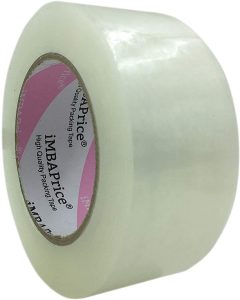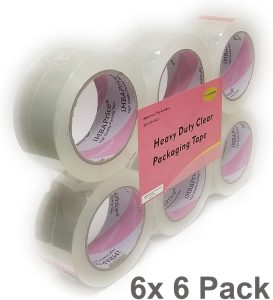Mastering the art of proper tape usage involves understanding the different types of tape available, their applications, and employing best practices for effective and safe use. Here’s a guide to help you become proficient in using tape correctly:
1. Choose the Right Tape:
- There are various types of tapes, including masking tape, duct tape, double-sided tape, electrical tape, painter’s tape, packaging tape, and more. Select the appropriate type for your specific task.
2. Read Instructions:
- Each type of tape has its recommended uses and limitations. Read the manufacturer’s instructions and guidelines to ensure you’re using the tape correctly.
3. Surface Preparation:
- Ensure that the surface you’re applying tape to is clean, dry, and free of dust, grease, or debris. A clean surface helps tape adhere properly.
4. Application Techniques:
- Cut or tear the tape to the desired length before applying.
- Avoid stretching the tape excessively, as it may affect its adhesive properties.
- Apply even pressure while placing the tape to ensure it adheres uniformly.
5. Removing Tape:
- Different tapes have varying levels of adhesive strength. Some may be designed for temporary use and should be removed shortly after use, while others are meant for more long-term applications.
- When removing tape, pull it back on itself slowly and at a low angle. This helps prevent damage to the surface and minimizes the risk of leaving adhesive residue.
6. Avoid Extreme Conditions:
- Some tapes are not suitable for extreme temperatures, moisture, or UV exposure. Make sure to use tapes that are compatible with the environmental conditions you’ll be exposing them to.
7. Double-Sided Tape:
- When using double-sided tape, apply it to both surfaces you want to bond together for better adhesion.
- Double-sided tapes are often used for mounting lightweight objects and crafts.
8. Masking Tape and Painter’s Tape:
- Masking tape is designed to provide clean edges when painting. Remove it while the paint is still wet for sharp lines.
- Painter’s tape is designed for delicate surfaces and is less likely to damage paint or leave residue when removed.
9. Electrical Tape:
- Electrical tape is used for insulating and securing electrical connections. Make sure to wrap it tightly and overlap layers for effective insulation.
10. Duct Tape:
- Duct tape is versatile and has strong adhesive properties. It’s often used for temporary repairs and quick fixes, but it may leave residue when removed.
11. Packaging Tape:
- Packaging tape is designed for sealing boxes and packages. Use a tape dispenser for efficient application.
12. Safety Precautions:
- Some tapes may contain allergens or hazardous chemicals. Read the safety information on the tape’s packaging and handle with care.
13. Practice:
- Like any skill, practice makes perfect. The more you use different types of tape, the more you’ll learn about their specific properties and applications.
Remember that mastering tape usage comes with experience. Take your time to understand the specific characteristics of each type of tape and how to use them effectively and safely in various situations.






















